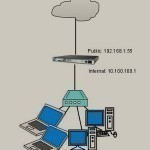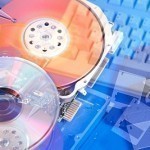The Active Directory data store, also referred to as directory, contains data on users, groups, computers, and on which resources these users, groups, and computers can access. It holds all Active Directory information. Each domain controller within a domain holds a readable/writable replica of the Active Directory data store that consists of information pertaining to the particular domain to which it belongs. Users and computers can continue to access the Active Directory data store when one domain controller in a domain is offline because they can use any other domain Read More
Exchange Server Data Storage and Management
Understanding Exchange Server 2003 Data Storage Exchange Server 2003 uses the Extensible Storage Engine (ESE) database structure to store data. Data can be stored separately for messages and for transactions: Messages are stored in.edb and .stm database files. Database files also contain a number of other components, including: Rules Folders Attachments Indexes Transactions are stored in transaction log files. A message that is created is first written to log files before it is written to the database files. From the log files, the transactions are sequentially written to a numbered Read More
How to Use Microsoft Access
Microsoft Access Microsoft Access is a program that ships with Microsoft Office and allows users to retrieve, store, and organize information from a wide variety of sources. Microsoft Access is ideal for small businesses, entrepreneurs, and those who simply wish to keep track of their finances better. Microsoft Access can perform many different tasks and includes a vast number of prebuilt applications that can be used to organize information in different ways and easily share that information with other users. User Interface Microsoft Access features an advanced user interface system Read More
Installing and Configuring NAT

In Routing and Remote Access Service (RRAS), NAT can be used to provide basic Internet connectivity for small offices or home offices. NAT translates IP addresses and associated TCP/UDP port numbers on the private network to public IP addresses which can be routed on the Internet. Through NAT, host computers are able to share a single publicly registered IP address to access the Internet. NAT also offers a number of security features which can be used to secure the resources on your private network. The NAT service is integrated with Read More
Remote Access Security
Remote Access Security Overview To protect your corporate data from attacks from intruders and from being accessed by unauthorized users, you need to plan for and implement remote access security. You should authenticate remote access clients attempting to establish a remote connection with the remote access server. To secure connections to the corporate network, you can configure properties that either allow remote access or deny remote access. You can also specify authorization using the source number or destination phone number as the basis. There are a number of strategies that Read More
How to Change an Operating System

An operating system is a computer’s core processing software, especially in the case of home computers. Operating systems provide the user with a graphical interface in which the user can interact with the computer itself. There are many operating systems available, most of which differ in design, function, and capabilities. However, most operating systems provide a core workstation (desktop), file storage, a taskbar, and a number of programs that assist the user in everything from calculations and networking to word processing and email. Backup The first thing to do when Read More
Using SMS Network Management Components
Using Network Monitor The key administration tasks which you can perform using Network Monitor are summarized below: You can capture frames directly from the network which you are monitoring. You can configure capture filters to specify the type of information which should be captured by Network Monitor. You can view captured frames immediately once the capture is complete, or at some later stage. You can filter captured frames by creating display filters. This allows you to find specific information in a capture. You can create triggers if you want certain Read More
Active Directory Replication
The initial Windows NT versions were designed as single master network environments. The primary domain controller (PDC) was responsible for managing the domain database’s master copy. The PDC was therefore responsible for replicating any changes to the backup domain controllers (BDCs). In these environments, any changes had to be performed on the PDC, which then replicated these database changes to the BDCs. What this meant was that in cases where the PDC was unavailable, no changes were made to the domain database. From this simple discussion, it is clear that Read More
How to Increase Virtual Memory
For computer users that multi-task or work with high performance applications, you should know about virtual memory and how to get the most from it. Virtual memory can be best described as simulated RAM. If your computer has 1 GB of RAM and you use up all of this memory with the OS and several applications, your computer is forced to compensate by switching from physical RAM to virtual memory. Without virtual memory, once your computer ran out of physical RAM, no other programs or higher performance could be possible. Read More
How to Install DirectX
To install DirectX, it is recommended that the latest DirectX version is downloaded directly from Microsoft. Go to the DirectX 9.0c End-User Runtime download page using Internet Explorer. Click the Download button. Click the Run button to run dxwebsetup.exe immediately. Click the next Run button. Check the circle next to “I accept the agreement.” Click the Next button. Click the Finish button. Checking the DirectX Version Installed on the System Users can check which version of DirectX is installed on their computer with the DirectX Diagnostic Tool. To check which Read More


Share on: